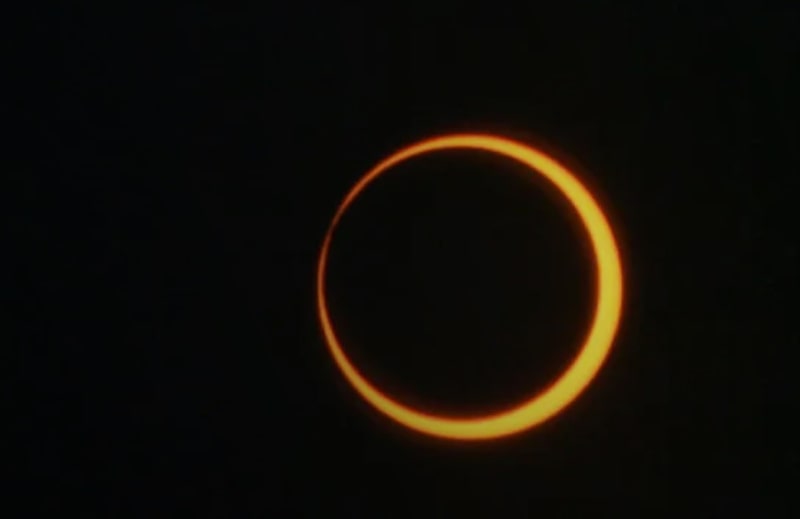Bloomberg Línea — On Saturday, October 14, 2023, a spectacular solar eclipse will grace the skies across North, Central, and South America. This celestial event will be visible in parts of the United States, Mexico, and numerous countries in South and Central America, as reported by NASA.
In the United States, the annular solar eclipse will commence in Oregon at 09:13 PDT and conclude in Texas at 12:03 CDT. It will then journey through Mexico, passing through Guatemala, Belize, Honduras, Nicaragua, and Panama. Afterward, it will traverse South America, making its way through Colombia and the northern region of Brazil before fading into the Atlantic Ocean at sunset.

Wondering where you can witness this extraordinary spectacle best? Here are some prime locations:
In Mexico, the eclipse will be most prominent in the southeastern region, including:
- Campeche
- Quintana Roo
- Tabasco
- Yucatán
- Monterrey
The states with a less clear view of the eclipse in Mexico are:
- Colima
- Jalisco
- Nayarit
In Colombia, you can catch a glimpse of the eclipse in cities such as:
- Bogotá
- Meta
- Valle del Cauca
- Risaralda
- Quindío
- Tolima
- Huila
- Caquetá
- Guaviare
- Vaupés
In the United States, the eclipse will be visible in the following states:
- Oregon
- Idaho
- California
- Nevada
- Utah
- Colorado
- New Mexico
- Arizona
- Texas
In Honduras, esteemed educator Ricardo Pastrana, from the National Autonomous University of Honduras (UNAH), has identified privileged locations for the optimal annularity experience:
- Bay Islands, notably Utila Island
- La Ceiba, Atlántida, spanning from El Perú to Corozal Beaches
- Yoro (Méndez, Boca Mame, and San Francisco)
- Olancho (Gualaco, Santa María Real, and Catacamas)
From the Panamanian territory, residents can appreciate an annular eclipse in the provinces of Coclé, Veraguas, Herrera, Los Santos, Comarca Ngöbe Buglé, part of Bocas del Toro, and part of La Chorrera. In the remaining provinces, the eclipse will be partial, as confirmed by the Technological University of Panama.
In Nicaragua, the Amateur Astronomers Association “Viva León Jodido” (Asafile) has announced that they will provide 10 telescopes with special filters, binoculars, and special glasses for astronomy enthusiasts to observe this celestial phenomenon from Juan Jose Quezada Central Park in León starting at 09:00. Experts suggest that it will be visible from all parts of Nicaragua, with the Central Region and the South Caribbean being the optimal spots for observation.
In Guatemala, the Institute of Earth Sciences and Astronomy Research (IICTA) at Galileo University has noted that the phenomenon will be partially visible.
Don’t miss this breathtaking celestial event on October 14, 2023, as the moon briefly covers the sun in a remarkable annular solar eclipse, creating a stunning spectacle across the Americas.
Read Also:
Mexico’s State-Owned Airline Scheduled for Takeoff In December


